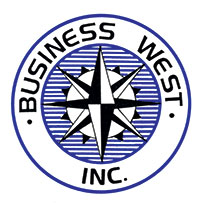By Murrel Bland
The recent live production of The Wizard of Oz at Providence Medical Center Amphitheater in Wyandotte County Park, Bonner Springs, brought back memories of what might have been if the Oz theme park would have come about.
The amphitheater, originally called Sandstone, was the brainchild of restaurateur Gus Fasone. Sandstone opened in 1984 and throughout the years attracted well-known entertainers including Elton John, Chicago, the Everly Brothers, Tom Petty and The Heartbreakers, Frankie Laine, Patti Page, the Beach Boys, The Grateful Dead, Def Leppard, Michael Hedges and Duran Duran.
After Sandstone, Fasone was searching for his next project. He wanted to build a first-class hotel at Wyandotte County Lake. That proposal was summarily rejected by a citizen activist group called “Friends of the Lake.” That group found favor with then State Senator B.D. Kanan who championed legislation that forbid a hotel at the lake.
Undaunted, Fasone moved his plans for a hotel to a location near I-435 and Parallel Parkway. He also later had plans for a nearby theme park based on The Wizard of Oz. Fasone reasoned that Kansas would be a natural place for an Oz theme park as everyone identified Oz with Kansas.
In the early 1990, I remember attending a meeting at Fasone’s restaurant of local supporters and investment bankers from Little Rock, Ark. Would it be possible for then President Bill Clinton, an Arkansas native, to come for the grand opening of the Oz theme park?
Fasone and his associates, including Robert Kory, a Los Angles entertainment lawyer, and Skip Palmer, who had worked for the Disney organization, weren’t able to garner the support of elected officials, particularly Mayor Carol Marinovich. Besides, it was 1997 when the International Speedway Corporation came to Wyandotte County seeking to build what is now the Kansas Speedway. There simply wasn’t enough room for both the speedway and Oz.
Fasone and associates decided to move their development plans to the Sunflower Army Ammunition Plant in northwestern Johnson County near the City of DeSoto. The plant, nearly 11,000 acres, was established in 1941 to meet the demands of World War II. Western Wyandotte County, according to legend, was originally considered as a site for the plant, but there was not adequate acreage.
The Sunflower plant was considered excess property by the U.S. Army in 1997. The hitch for private sector development was the unknown cost of cleaning up the contaminated soil. The property was turned over to the State of Kansas and Johnson County in 2005.
Unfortunately, the Oz promoters encountered similar problems that they did in Wyandotte County; they never garnered the support of Johnson County elected officials and grass-root residents. Bill Sheldon, an acquaintance from undergraduate journalism days in the 1960s at the University of Kansas at Lawrence, led fellow Johnson County residents in protesting the Oz development. The opponents called themselves Taxpayers Opposed To Oz—TOTO for short.
So, the Wizard finally did come to Wyandotte County—not as a theme park, but as a first-class musical production. The live entertainers were complemented with backscreen projections from the 1939 MGM movie production. The Theater League produced the show.
The Kansas City, Kansas, Convention and Visitors’ Bureau led in the promotion of the Oz musical by encouraging organizations including the National Agricultural Center and Hall of Fame, the Grinter Place Friends and the Wyandotte County Museum, to celebrate “The Summer of Oz.”
Critic Bob Evans, in his complimentary review of the Oz show, has suggested that other similar live shows may follow. That would be a very welcome addition.
Murrel Bland is the former editor of The Wyandotte West and The Piper Press. He is executive director of Business West.
